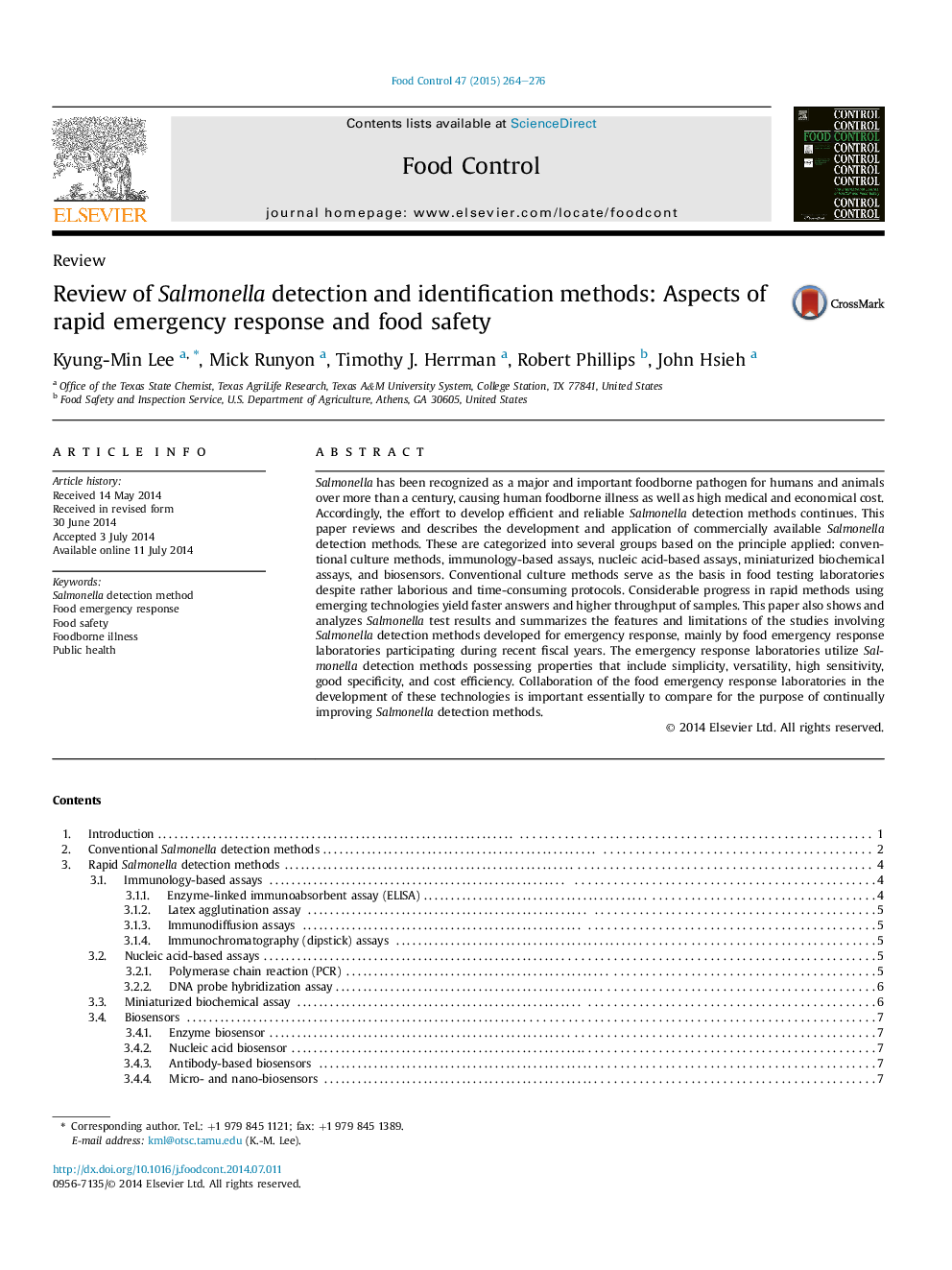| Article ID | Journal | Published Year | Pages | File Type |
|---|---|---|---|---|
| 6391393 | Food Control | 2015 | 13 Pages |
Abstract
Salmonella has been recognized as a major and important foodborne pathogen for humans and animals over more than a century, causing human foodborne illness as well as high medical and economical cost. Accordingly, the effort to develop efficient and reliable Salmonella detection methods continues. This paper reviews and describes the development and application of commercially available Salmonella detection methods. These are categorized into several groups based on the principle applied: conventional culture methods, immunology-based assays, nucleic acid-based assays, miniaturized biochemical assays, and biosensors. Conventional culture methods serve as the basis in food testing laboratories despite rather laborious and time-consuming protocols. Considerable progress in rapid methods using emerging technologies yield faster answers and higher throughput of samples. This paper also shows and analyzes Salmonella test results and summarizes the features and limitations of the studies involving Salmonella detection methods developed for emergency response, mainly by food emergency response laboratories participating during recent fiscal years. The emergency response laboratories utilize Salmonella detection methods possessing properties that include simplicity, versatility, high sensitivity, good specificity, and cost efficiency. Collaboration of the food emergency response laboratories in the development of these technologies is important essentially to compare for the purpose of continually improving Salmonella detection methods.
Related Topics
Life Sciences
Agricultural and Biological Sciences
Food Science
Authors
Kyung-Min Lee, Mick Runyon, Timothy J. Herrman, Robert Phillips, John Hsieh,
